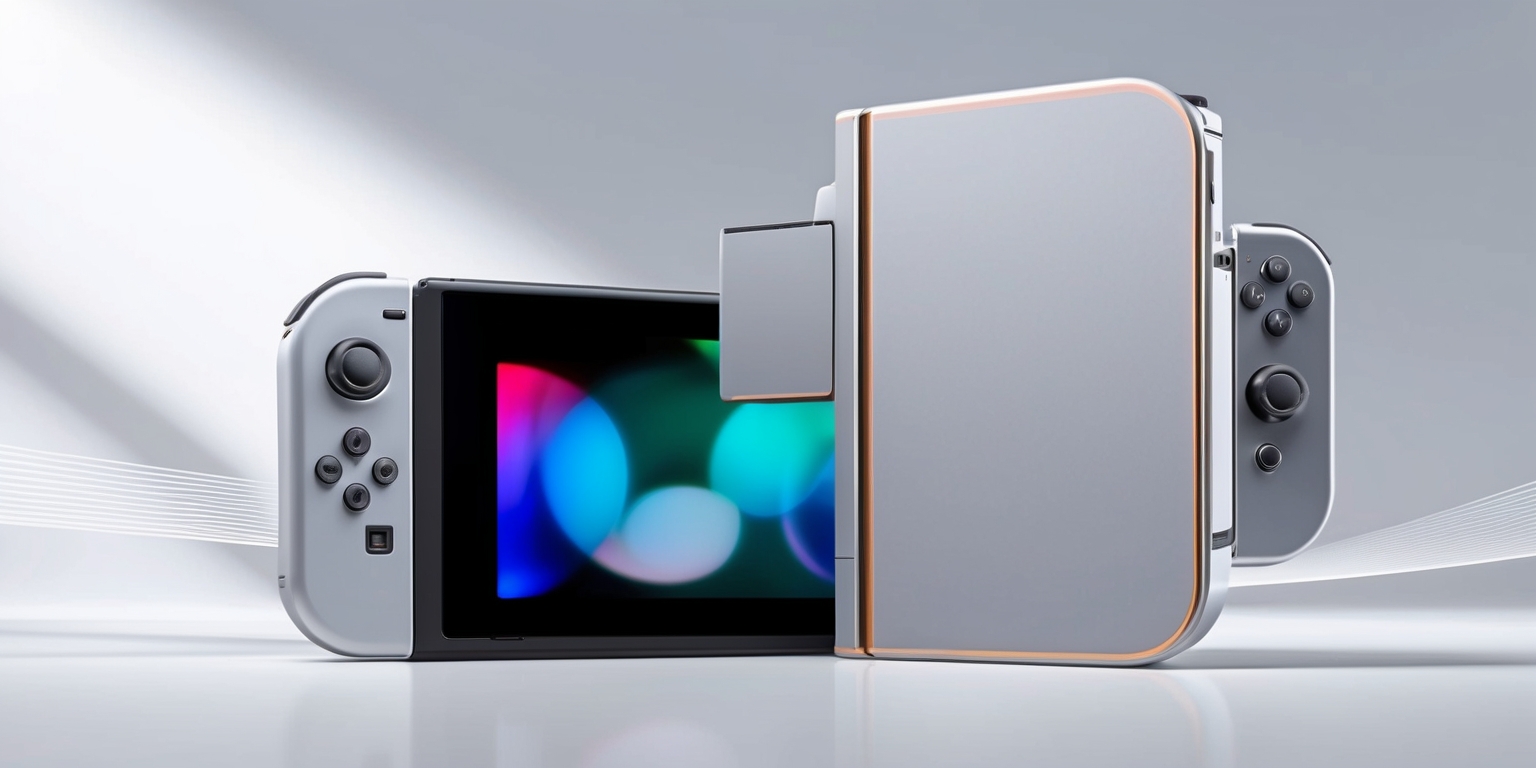
Best For You
Unlocking Hidden Brilliance: A Deep Dive into Nintendo Switch 2’s HDR Calibration
The recent unveiling of a subtle yet essential HDR configuration Consider this option: "on the Nintendo Switch 2, which debuts with" This maintains the original meaning while using unique wording an intriguing twist to the way users adjust their visual experience. While the console proudly sports HDR support, it also conceals a critical setting beneath an ambiguous interface that may leave even seasoned gamers scratching their heads. This exploration delves into the nuances of the system’s display adjustments and the interplay of various elements that influence picture fidelity. For enthusiasts eager to achieve the perfect blend of brightness, contrast, and detail, understanding these subtleties is paramount. The following discussion breaks down the intricacies of the HDR setup and provides an in-depth look into the functionalities, aesthetics, and performance characteristics that define this next-generation console.
Navigating the Unconventional Display Interface
The first notable aspect of the Nintendo Switch 2 lies in its display interface, which immediately captures the attention of users with its blend of modernity and cryptic design choices. Upon starting the HDR configuration routine on an HDR-compliant screen, you are presented with a familiar base setting that allows you to determine maximum peak brightness. However, immediately after this adjustment, the system transitions to a demo screen that appears to merely showcase the effects of your tweak, prompting further interaction via a seemingly innocuous slider. This navigation method is far from linear and appears intentionally layered to require an extra level of user engagement. The design essentially invites users to delve deeper into its hidden menu, compelling them to explore options that may drastically enhance the quality of the image output. The interface stands as a testament to Nintendo’s approach of combining intuitive settings with the need to unlock deeper functionalities through exploration.
Uncovering the Hidden Brightness Adjustment Slider
A central gem in the console's HDR settings is the concealed adjustment slider that emerges when interacting with the demo screen by pressing a dedicated button. This particular slider controls what is known as the paper white point—a subtle reference level from which other intricate HDR settings are calibrated. Although the slider might seem like a simple brightness control, its impact on image clarity is profound. When left at its default value, the entire HDR image risks being overly exposed, resulting in lost details in both midtones and shadows. Its existence highlights a conscious design choice to empower users with greater control over how light and shadow interplay across the screen. This hidden feature invites users to experiment and optimize their display outlay with precision, making It serves as a vital resource for anyone in pursuit of an… immersive visual experience.
Understanding the Critical Role of the Paper White Point
Delving deeper, the paper white point setting controlled by the hidden slider plays a vital role in the overall HDR calibration. Here, the paper white point is not just a measure of brightness, but a bedrock on which the entire dynamic range of the displayed image depends. Its accurate calibration ensures that the representation of lighter tones is maintained without washing out the delicate balance between highlight and shadow. Given that the recommended nit levels for accurate HDR performance typically lie between 200 and 300, the lack of an explicit nit value might leave some users uncertain about their adjustments. Nonetheless, this setting serves as a cornerstone for subsequent calibrations behind the scenes, influencing other subtle image parameters. The careful adjustment of this setting can result in a more nuanced, balanced picture quality that resonates across various viewing scenarios.
Dynamic Tone Mapping and Its Implications

The Nintendo Switch 2’s HDR configuration is not solely about manually adjusting brightness values; it also introduces sophisticated options such as Dynamic Tone Mapping. For users striving for optimal visual performance, ensuring that this feature operates correctly is crucial. Dynamic Tone Mapping works by adjusting how the console processes and maps picture details, often offering the choice between a fully automated setting or allowing the console to use standards like HGIG. Setting the console to rely on its internal tone mapping engine can provide a more consistent output that meets the display’s potential, rather than depending on external automatic adjustments that might misinterpret the intended visuals. The interplay of such settings underscores Nintendo’s commitment to providing a customizable experience that prioritizes user control over automated processes, urging users to revisit and refine the HDR setup after initial configuration.
Detailing the Impact on Midtones and Shadow Nuances
An often-overlooked aspect in HDR configurations is the preservation of midtone and shadow details, critical for ensuring a balanced visual output. The hidden paper white point adjustment is instrumental in maintaining these details. When the setting is not properly adjusted, an image can be rendered with overexposed highlights that erode the depth of darker areas. This results in a display where intricate textures and subtle gradations are lost, leaving a less immersive experience. By manually calibrating this key setting, users are able to define a more dynamic range that carefully preserves the integrity of midtones and shadows. This meticulous balance is essential in complex scenes where varying levels of detail work together to create a visually rich narrative. The system thus calls on users to pay attention to every aspect of the picture quality, ensuring that the full spectrum of visual information is retained.
Blending Functionality with Aesthetic Considerations
The unique configuration of HDR settings on the Nintendo Switch 2 is emblematic of a broader approach that bridges technical functionality with aesthetic consciousness. The console’s design does not merely focus on brute performance; it carefully considers how each setting affects the overall image aesthetic. Elements such as peak brightness and paper white point are not adjusted in isolation but rather in a synergistic fashion that enhances the picture’s natural appeal. The aesthetic output caters to both cinematic displays and interactive gameplay environments, enabling subtle gradations of color and tone to be reproduced faithfully. This fusion of technical precision with artistic presentation ensures that the user experiences a seamless visual transition from everyday use to moments of intense gameplay. By focusing on both measurable data and the subjective feel of the image, Nintendo crafts a visually gratifying and immersive experience.
Interfacing User Feedback with Hardware Limitations
The HDR experience on the Nintendo Switch 2 is designed with user interactivity at its core, yet it also reflects the underlying limitations imposed by current hardware capabilities. The initial UI experience, with its brief demonstration screen and hidden slider, signals a balance between user-friendly design and the inherent restrictions of the console’s display. Users are offered an opportunity to engage deeply with the system, tweaking settings to tailor the output to their specific hardware environment. This dichotomy between intuitive control and technical specification necessitates a high level of user engagement. While some might find the setup process less direct than other systems in the market, it reinforces the notion that meaningful interaction with technology often requires a detailed understanding of both the device’s potential and its limitations. Thus, the configuration process becomes It presents itself as an engineering hurdle as well as an artistic pursuit for enthusiasts.
Optimizing the HDR Setup for Diverse Display Environments
The hidden setting on the Switch 2 is "Especially influential when examined from the perspective of" diverse display environments. For users connecting the console to different types of HDR-compliant screens, the Capacity to adjust specific details of the image precisely output is indispensable. This customization allows the system to accommodate variations in display capabilities—from premium models that achieve high nits to more modest panels that may struggle with exact reproduction of high dynamic range. Adjusting the paper white point ensures that midtones, highlights, and shadows maintain their integrity across various screens. This adaptability is crucial for gamers who switch between portable and docked modes, as each scenario demands a unique calibration to achieve optimal results. The careful balance of settings guarantees that the console delivers a consistent and immersive HDR experience, irrespective of the display technology in use.
Integrating Console Behavior with Game Performance
Beyond mere technical adjustments, the Nintendo Switch 2’s HDR configuration significantly influences how games are visually rendered and experienced. The manner in which the console maps brightness and calibrates the paper white point plays into game aesthetics, impacting everything from vivid sunlit landscapes to dimly lit caves. By empowering gamers with a customizable HDR setup, Nintendo creates a scenario where game performance is inherently tied to display fidelity. Players can now fine-tune visual parameters to complement the artistic direction of a game, allowing for both precision and atmospheric tone. In multiplayer adventures or story-driven experiences, every shade and highlight is crucial to delivering an immersive narrative. The interplay between calibrated display settings and in-game environments forms a symbiotic relationship, ensuring that the technology adapts seamlessly to the creative decisions of game developers.
Revisiting and Fine-Tuning Post Configuration
After the initial setup of the HDR configuration, it is advisable for users to revisit the settings periodically to ensure that each parameter remains in sync with the display’s evolving performance. The Nintendo Switch 2 encourages this iterative process, allowing users to tweak settings like the brightness slider that controls the paper white point. Over time, external factors such as ambient lighting or the gradual wear of the display may necessitate these adjustments. By running through the HDR setup again after initial configuration, players can confirm that the image remains balanced and true to the intended quality. This proactive approach to calibration is aligned with the nuanced demands of modern HDR experiences. Emphasizing periodic review underscores a commitment to maintaining high-quality visuals, reinforcing the dynamic relationship between device configuration and the user’s viewing environment.





